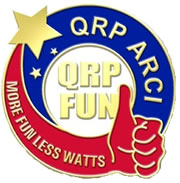Field day for NCRC is right around the corner, and its a busy one for me. I’m responsible for the GOTA station, am acting as the Public Information Officer, and am setting up the 2m SSB and Linear Satellite station. In addition, due to the location of the above equipment, all of it will be operated off of battery power and solar panels. A 60AH, 40AH, and 10AH LiFePO4 batteries will be used along with a rigid 100-watt and folding 30-watt solar panel and MPPT charge controller.
Tonight was a good one. There was a pass of AO-07 (now 38 years old), around 5:30 PM, followed by a pass of VO-52 (8 years old), around 6:50 PM, and FO-29 (17 years old), around 8:35 PM. By monitoring my down-link on all three birds, I was able to develop a Receive Frequency Offset chart for each one. This is the difference between the published up-link/down-link values, and what I actually experienced (which is influenced by the oscillator aging of the satellite and its operating environment, as well as errors introduced on my end).
For the most part, the mid-pass value is adequate, which is:
- AO-07 +2.7 KHz
- VO-52 +3.0 KHz
- FO-29 -0.2 KHz
By setting the XIT of the receive to this offset, it should be possible to transmit without finding the down-link first — which is quite a challenge during Field Day since the band is full of folks sending dots and dashes looking for themselves. There is some variation in the offsets, of course. AO-07 ranged from +2.9 at the start of a pass to +2.5 at the end. VO-52 varied the most, ranging from +3.3 at the start of a pass, and +2.3 at the end. FO-29 ranged from -0.1 at the start to -0.3 at the end. (As you would expect, the frequency is always higher at the start of the pass, and shifts lower as the bird passes overhead).
I was able to make a CW contact on each bird tonight as well. My thanks to Wayne, NM3B, for a QSO on AO-07, and Rolf, NR0T for QSOs on both VO-52 and FO-29.








